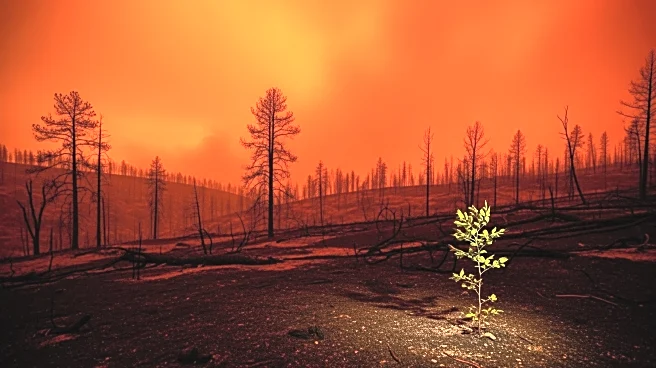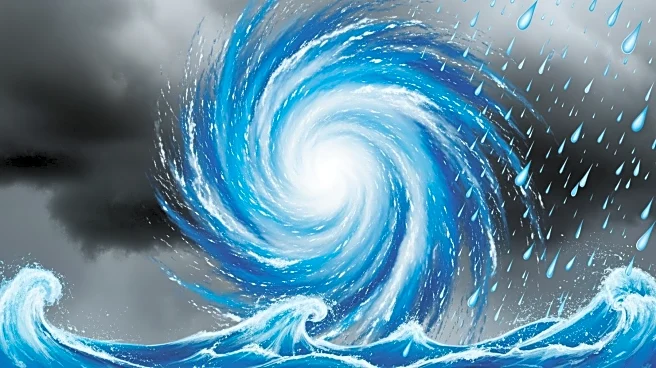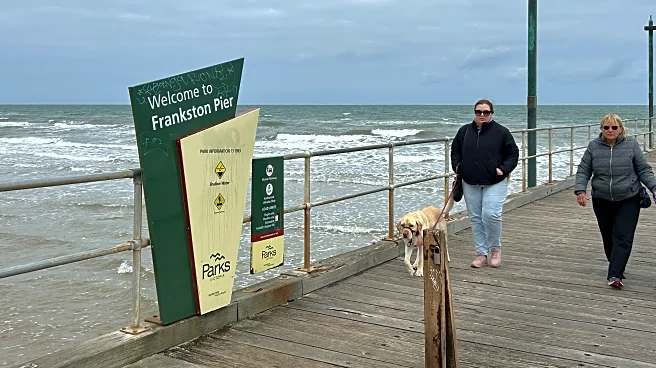What's Happening?
Australia and New Zealand are currently experiencing severe wildfires fueled by record-breaking heat and strong winds. The Australian weather bureau reported that a mass of hot air, which developed over
the country's outback, is moving across the southeast, causing a spring heatwave. Wind gusts reaching up to 100 kph have heightened bushfire threats, leading to several total fire bans in New South Wales. As of now, 36 fires are burning, with nine yet to be contained, and nearly 2,000 properties have lost power. In Sydney, temperatures have soared past 37°C, breaking October heat records.
Why It's Important?
The wildfires pose significant risks to both human life and property, as well as to the environment. The extreme weather conditions are a stark reminder of the increasing frequency and intensity of natural disasters, potentially linked to climate change. The situation demands urgent attention from policymakers and emergency services to mitigate the impact and prevent future occurrences. The economic implications are also considerable, with potential disruptions to local businesses and tourism, as well as the cost of firefighting efforts and recovery.
What's Next?
Authorities are likely to continue monitoring the situation closely, with potential evacuations and additional fire bans if conditions worsen. There may be increased calls for government action on climate policy and disaster preparedness. The international community could also offer support, as the situation highlights the global nature of climate-related challenges.
Beyond the Headlines
The wildfires underscore the need for a broader discussion on climate resilience and sustainable land management practices. There may be long-term shifts in public policy and community planning to better prepare for and adapt to such extreme weather events.













